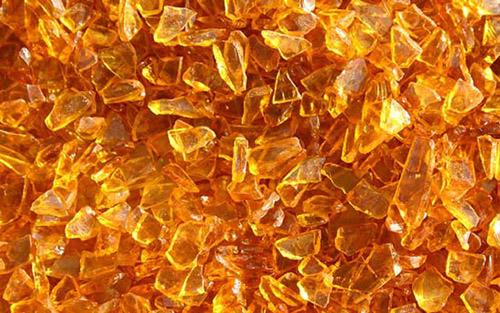Dr.Vishal Raina and
Shalini Khajuria
Honey is the best source of heat and energy giving over 5,500 calories per kg. Very often it is noticed that some consumers have the perception that crystallized honey either unfit for consumption or is a sign of contamination. It is therefore, expedient to clarify some of the prevailing wrong impression about granulated honey. Actually it is a sign of high value honey. Don’t throw crystallized honey out, unless you like to waste delicious food. Honey is a super-saturated solution of two sugars: glucose and fructose. Honey crystallizes because it is a super-saturated solution, it’s a natural chemical process that some of the sugars eventually come out of solution. Honey will even crystallize when it’s still in the comb. Honey from certain flowers like “mustard” invariably crystallizes if kept for a long time. Following factors responsible to make crystallization of honey:
Temperature: Honey will crystallize in the hive if the temperature goes below 50ºF (10ºC), and honey will crystallize in your containers if you have a cold cupboard cabinet. Finding a warmer spot to store your honey will slow crystallization. It’s fairly simple to turn your honey back into a smooth liquid again by heating it. The best way to do this is by to put your honey in a bowl of warm water and slowly letting it warm up. Microwaving overheats the honey and doesn’t heat evenly, so that’s not recommended. Honey also keeps best in glass, rather than plastic, and glass is much better for reheating.
Sugars Composition: Honey is a super-saturated solution of two sugars: glucose and fructose. The proportions of these two sugars are characteristic to make their honey. It’s the glucose that crystallizes, so some types of honey are more resistant to crystallization because they have low glucose.
Pollen: Pollen- appearing as a fine dust, are acts as a sort of honey attribution. Honey with pollen in it is great honey, but crystallization happens faster when there are small particles available to build on. Fresh, raw honey has a lot of those in the form of pollen grains.
Crystallization process: The crystallization results from the formation of monohydrate glucose crystals, which vary in number, shape, dimension and quality with the honey composition and storage conditions.
The lower the water and the higher the glucose content of honey, the faster the crystallization. Temperature is important, since above 25 ° and below 5 °C virtually no crystallization occurs. Around 14°C is the optimum temperature for fast crystallization, but also the presence of pollen grains and slow stirring result in quicker crystallization. Usually, slow crystallization produces bigger and more irregular crystals. During crystallization water is freed. Consequently, the water content of the liquid phase increases and with it the risk of fermentation.
Myth or fact: The process of honey crystallization is a little understood or rather, much misunderstood phenomenon. Most of the consuming public associate crystallized honey that has become coarse and grainy in texture with table sugar and assume it is an unnatural, adulterated honey or a poor quality honey. Some even think that crystallized honey is spoiled and should be discarded. Many consumers still think that if honey has crystallized it has gone bad or has been adulterated with sugar. Also, the size of the crystals formed varies from honey to honey; some varietals crystallize rapidly to form fine crystals while others, slowly to form large ones. This is the reason why some honey varietals crystallize to form a coarse sugary texture, and some varietals crystallize to form a smooth creamy consistency. Even though the formation of crystals has absolutely no bearing on the quality of honey, somehow most people still reject honey that is sugary and coarse in texture.
Mostly consumers prefer honey that stays liquid for a long period of time and honey that is brilliantly clear and free of any cloudy substance, honey suppliers say they are just giving what consumers want.
Yielding the healthiest honey for consumers is not their primary concern. The truth is crystallization of honey is a natural and uncontrolled process. Containing more than 70% sugars and less than 20% water, honey is naturally an unstable super-saturated sugar solution. Hence, over time, almost all pure raw honey crystallizes. The composition ratio of glucose and fructose in a floral nectar source determines how fast the honey crystallizes. The following are suggestion to overcome the process of crystallization in honey.
*By placing a crystallized honey over the warm water bath of about 40ºC for about 15 minutes or as soon as the granules have dissolved, it regains its original form. Honey contains certain enzymes, which can be damaged by to too much heat.
*Processed honey remains in liquid form on the market shelves for a much longer time as sugar crystals have been dissolved by pasteurization and any suspended particles and air bubbles that encourage crystallization are removed by filtration.
*Creamed honey, also referred to as whipped honey, refers to honey pasteurized in a controlled environment so it spreads more easily. It is another way for honey producers to save honey from turning grainy and undesirable in appearance.
feedbackexcelsior@gmail.com


